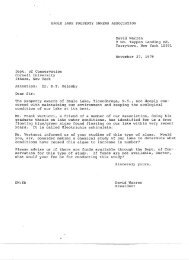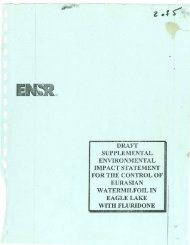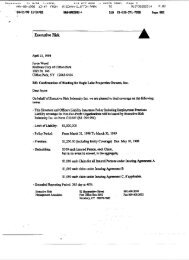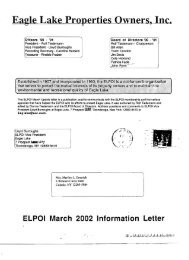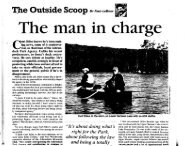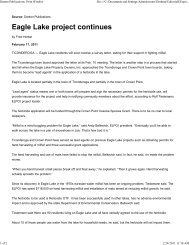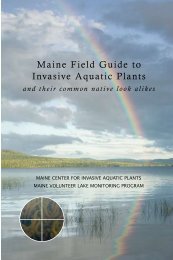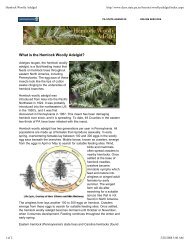Adirondack Park - Eagle Lake Property Owner's Inc.
Adirondack Park - Eagle Lake Property Owner's Inc.
Adirondack Park - Eagle Lake Property Owner's Inc.
You also want an ePaper? Increase the reach of your titles
YUMPU automatically turns print PDFs into web optimized ePapers that Google loves.
III. Aquatic Nuisance Species Problems and Concerns in the <strong>Adirondack</strong> <strong>Park</strong><br />
This section of the Plan borrows very heavily from two existing documents (in some cases<br />
whole paragraphs are reproduced nearly intact). Taken together, these two documents convey<br />
much of the best information and thinking regarding invasive species in the <strong>Adirondack</strong>s, and<br />
the authors of this draft <strong>Adirondack</strong> ANS Management Plan are grateful for the starting point<br />
that these reports collectively present. The two documents are: NYSDEC’s Siamese Ponds<br />
Wilderness and Dug Mountain, Forks Mountain and Chatiemac Primitive Areas Proposed<br />
Final Unit Management Plan/Environmental Impact Statement, and section III of the <strong>Lake</strong><br />
Champlain Basin Aquatic Nuisance Species Management Plan, published by LC Basin<br />
Program and finalized January 2005<br />
Introduction<br />
About 48 non-native species have been introduced into waters of the <strong>Lake</strong> Champlain Basin<br />
(Basin), much of which falls within the <strong>Adirondack</strong> <strong>Park</strong>. Many of these species have dispersed<br />
and are at nuisance levels, causing substantial (though not quantified) environmental and<br />
economic impacts. These are considered to be aquatic nuisance species (ANS). Other ANS are<br />
expanding their ranges in adjacent regions and threaten to enter the Basin. If introduced, many of<br />
these new species would likely cause additional negative impacts and further strain limited<br />
management resources.<br />
At this writing, there is no authoritative list of ANS for the <strong>Adirondack</strong>s, and the total number<br />
remains open to speculation. In any case, the number of ANS in the <strong>Adirondack</strong>s is likely<br />
smaller than the figure of 48 listed for the Basin, which in turn is low relative to adjacent regions.<br />
For example, 160 exotic species are known in the Great <strong>Lake</strong>s; 87 have been found in the St.<br />
Lawrence River; while 113 have been listed in the Hudson River (Mills et al. 1993, 1996, de<br />
Lafontaine and Costan 2002, Strayer 2005).<br />
This perspective is important, and it suggests that: a) <strong>Adirondack</strong> aquatic ecosystems are still<br />
largely intact as compared to nearby regions, and; b) a unique opportunity exists to capitalize on<br />
those factors (remoteness, lack of development, reduced suite of ANS vectors, etc.) that may<br />
offer at least some protection against ANS invasions in the <strong>Adirondack</strong>s.<br />
As in other regions of the United States, attention to ANS in the <strong>Adirondack</strong>s has historically<br />
been a reactionary response. Resource managers have generally focused on addressing problems<br />
associated with specific ANS already introduced and only after the ANS populations reach<br />
nuisance proportions. Similarly, it was only after reaching nuisance proportions that ANS<br />
problems attracted significant attention from the public. Only minimal efforts were given to<br />
preventing the introduction of new ANS to the Basin, and those efforts were generally not well<br />
coordinated with similar efforts outside of the Basin.<br />
The potential pathways of introduction for ANS into and around the <strong>Adirondack</strong>s are numerous.<br />
The movement of boats and other aquatic equipment is the most visible and readily recognized<br />
pathway. Available information strongly suggests that the Eurasian milfoil invasion now<br />
12



